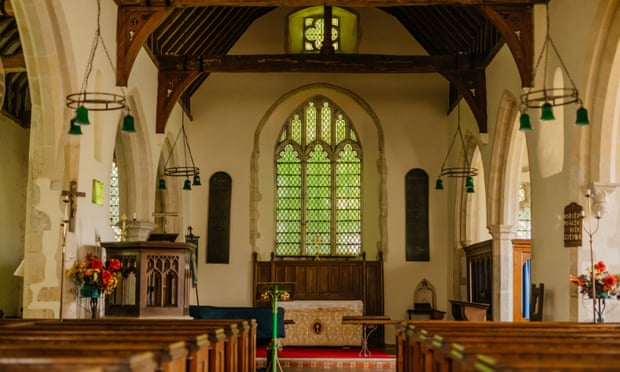
If ever a pub was destined to be haunted by a friendly ghost, it’s the Red Lion. Regulars swear that the spirit of former landlady Doris Jemison lingers in this inn that has been a landmark in Snargate, a hamlet on Kent’s Romney Marsh, since the 1540s.
Doris, who died in 2016, is buried in the graveyard of Saint Dunstan’s church, just up the lane. “But she’s very much here rather than there,” says her daughter Kate, who now calls time from across the marble-topped bar. Paintings, photos and other Doris mementoes take pride of place in the Red Lion, whose museum-like interior has changed little in over a century.
Having raised a glass of delicious toffee-apple-flavoured cider to Doris, I set off on my walk.
Inside Saint Dunstan’s I’m drawn to the ghostly image of a galleon, etched in red lines on the plaster wall. It was uncovered during renovations in 1964, and some say the ship is a sign that the late 12th-century church was once a haven for what was known on the marsh as the “free trade” – smuggling.
For about four years from 1817, Richard Harris Barham was rector at Saint Dunstan’s. Under his pen name, Thomas Ingoldsby, Barham wrote the humorous tales known as the Ingoldsby Legends, one of which begins: “The world, according to the best geographers, is divided into Europe, Asia, Africa, America and Romney Marsh.” This led to Romney Marsh being called the “fifth continent”, a title adopted by the Fifth Continent Landscape Partnership Scheme, an organisation devoted to preserving and celebrating the marsh’s countryside, history and traditions.
In collaboration with Romney Marsh Historic Churches Trust, the Fifth Continent has created a self-guided tour app for the marsh’s 14 medieval churches. I learn that the spectral ship mural was “more likely a backdrop to a guild altar for shipwrights in the area when it was full of sinuous creeks and saltmarsh”.
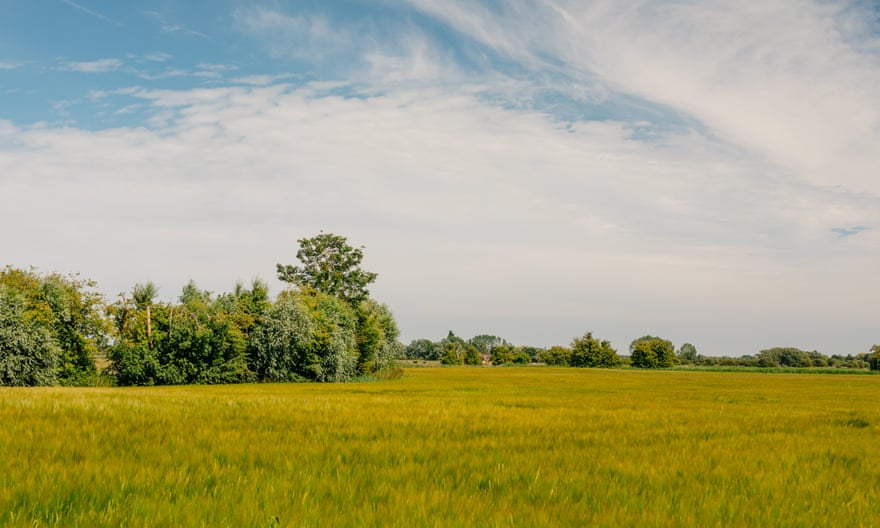
The marsh is still bisected by dykes and drainage channels – called sewers – forming a system of serpentine paths. A case in point is the bridleway that wriggles alongside a “sewer” between Snargate and Brenzett. I bash along the track through fluffy heads of waist-high cow parsley, scattering iridescent blue damselflies and orange tortoiseshell butterflies. A flock of Romney sheep graze the adjacent fields, spring lambs wobbling behind their mums. A swan floats elegantly in the sewer.
Marsh terrain may be pancake-flat, but wayfinding can be tricky when the rights of way are obscured by heavily planted fields or rampant plant growth. One considerate farmer has blazed a golden strip of glyphosate-treated wheat to delineate the footpath towards Saint Eanswith’s in Brenzett. This is the only church in England dedicated to the Anglo-Saxon princess who founded a nunnery at Folkestone in 630. Her image is at the centre of the church’s Marsh Mosaic, another of the Fifth Continent local projects.

In the Lady Chapel is the tomb of John Fagge and his son, 17th-century gentlemen from Rye whose alabaster effigies recline on top. These peaceful-looking, lifesize sculptures were the inspiration for Edith Nesbit’s spine-tingling ghost story, Man-Size in Marble. The author of The Railway Children lived down the road in Saint Mary’s Bay and is buried in the graveyard of Saint Mary in the Marsh.
Relics of second world war aircraft surround the Brenzett Aeronautical Museum, which is reached via a footpath across the A2070. Used as an advanced landing ground for D-day, the site was later a base for the Women’s Land Army, one of whose recruits was a young Doris Jemison.
The museum dates from 1972, when the founder, whose “hobby was digging up crashed planes across the Marsh” amassed a collection too big for his own home. I learn this nugget from a pocket-size “people’s guidebook” to north Kent called Everywhere Means Something to Someone. Recently published by Strange Cargo, it’s an evocative collection of stories and memories of hundreds of local people.
From the museum, I navigate tracks across more fields and the old Dungeness branch railway line to Saint Augustine’s in Brookland. An unusual feature here is its freestanding wooden bell tower, but for local historian and church expert John Hendy, the late-12th-century lead font inside is its most unique treasure. “Looking at the font’s decoration, you can tell how they farmed and dressed in 1175 – it’s an astonishing document,” he says.
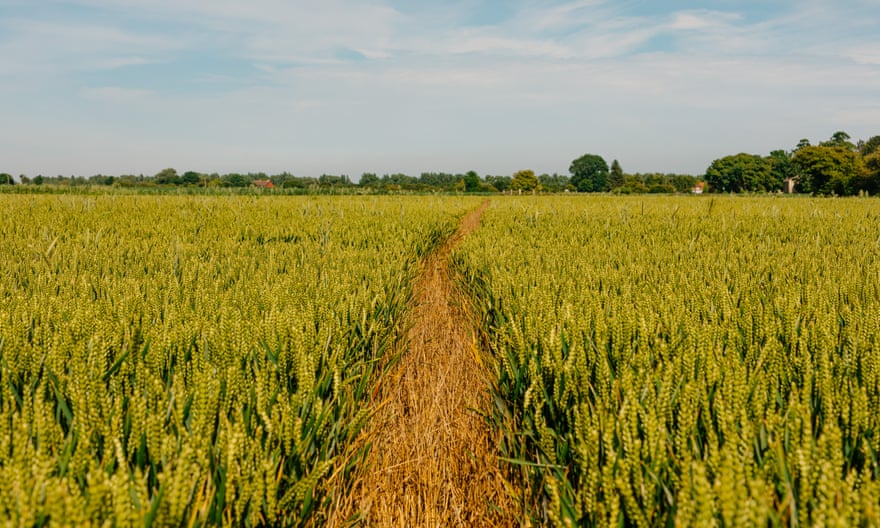
A fragment of a medieval wall painting in St Augustine’s depicting the murder of Archbishop Thomas Becket foreshadows the fourth church on my route. Surrounded by dykes and grazing sheep, the Saint Thomas Becket church cuts a dramatic, solitary figure. Late-afternoon sunlight filters through moody clouds as I approach Fairfield across buttercup- and clover-speckled fields to the diminutive church.
Saint Thomas Becket has been much rebuilt over the centuries, but the intimate Georgian interior with its white-painted box pews and triple-decker pulpit is unique among Romney Marsh churches. The door is locked, but a key hangs on the yard wall of nearby Becket Barn Farm.
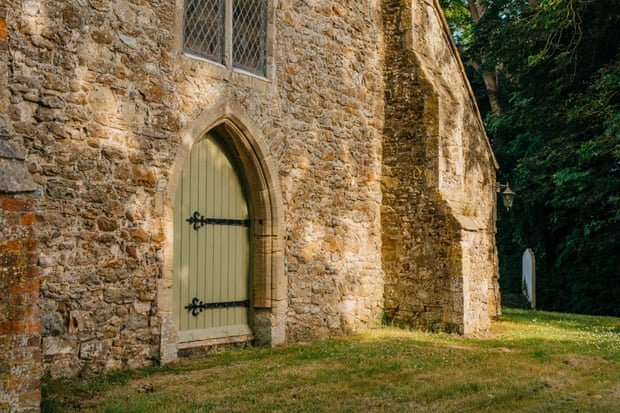
One more meandering country lane leads me from Fairfield back to Snargate. Along the way I pass a field of lime-green wheat rippling in the breeze – a mesmeric scene that reminds me of John Betjeman’s line that Romney Marsh is a place where “the roads wind like streams through pasture and the sky is always three-quarters of the landscape”.
Back at the Red Lion I am more than ready for a reviving pint of Goacher’s DSB – “Doris’ Special Bitter” – named in honour of the former landlady.
Google map of the route
Allow Google content?
This article includes content provided by Google. We ask for your permission before anything is loaded, as they may be using cookies and other technologies. To view this content, click ‘Allow and continue’.
Start Snargate
Distance 8.3 miles
Time 3 hours
Total ascent 0 metres
Difficulty Easy (but can be overgrown in spring and early summer)
The pub

Last refurbished in the 1870s, the Red Lion (no website) has been home to the Jemison family since 1911, when Kate’s grandfather Alfred became the landlord. Alfred’s old bicycle leans against the pub wall, and there’s a framed photo of him beside the bar.
The walls are plastered with second world war posters and pub-of-the-year certificates. Entertainment includes vintage games such as bagatelle and toad in the hole, and an old piano donated by a customer. The real ales and local ciders are all gravity-pulled straight from their casks. There’s no hot food, but staff will rustle up “chicken and chips” – a bag of crisps with a pickled egg plonked inside.
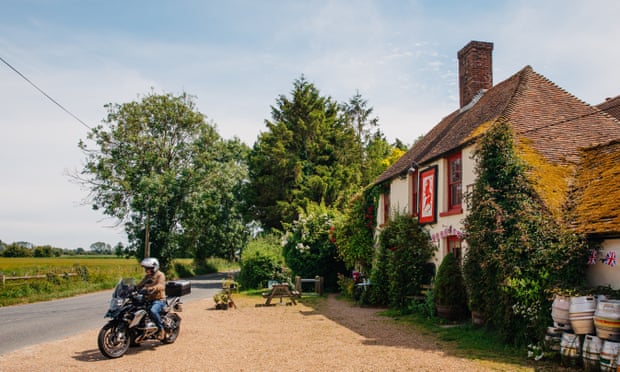
Where to stay
The Woolpack Inn in Warehorne, three miles north of Snargate, has been welcoming guests since 1570. Narrow, winding stairs lead to five en suite rooms handsomely furnished with ornate antique beds, roll-top baths and small complimentary decanters of port. The marine-themed Frederick suite (named after the friendly resident ghost) also has a woodburning stove. The wonky-beamed pub, which used to be connected by a smugglers’ tunnel to Saint Matthew’s Church opposite, offers mains such as Rye Bay huss curry, plus steak and woodfired pizza.
Doubles from £100 B&B, woolpackwarehorne.co.uk
Slow Travel Kent by Simon Richmond (Bradt, £14.99) is out now



